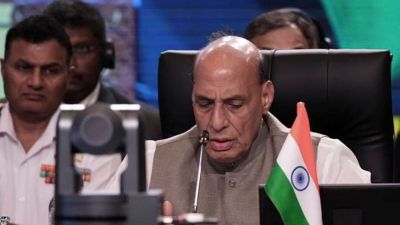Stay updated with the latest - Click here to follow us on Instagram
UAE records extreme humid conditions, Dubai worst-hit
The wet-bulb globe temperature, which measures the amount of heat stress on the human body hit 96 at the Persian Gulf International Airport and 95 in Dubai recently, The Washington Post report said.
 Euro News report said such climatic conditions, especially in Dubai, where high heat and humidity occur simultaneously are considered deadly
Euro News report said such climatic conditions, especially in Dubai, where high heat and humidity occur simultaneously are considered deadlyThe United Arab Emirates has been grappling with soaring temperatures of late with humidity reaching 90 to 95%. Indicating slight relief, the National Center of Meteorology in UAE has forecast light rainfall over the mountains and humid night on Friday.
On Wednesday, the mercury hit 42 degree Celsius in Asaluyeh, Iran and 41 degree Celsius on Thursday. Meanwhile, Dubai recorded a temperature of 45 degree Celsius on Tuesday. Recently, Abu Dhabi recorded 61 degree Celsius and Oman clocked temperature of 58 degree Celsius, according to The Washington Post.
Wet-bulb globe temperature
While the temperatures remained somewhat above normal, the dew points – a measure of humidity – were exorbitantly high spiking upto 90s. The wet-bulb globe temperature, which measures the amount of heat stress on the human body hit 96 at the Persian Gulf International Airport and 95 in Dubai recently, The Washington Post report said. The wet-bulb globe temperature is measured weighing upon temperature, humidity, wind and clouds.
Euro News report said such climatic conditions, especially in Dubai, where high heat and humidity occur simultaneously are considered deadly. When humidity hits 100 percent, sweat ceases to evaporate indicating the human body cannot cool down on its own.
As Dubai is close to the Tropic of Cancer and the Persian Gulf, its prone to such dangerous conditions. The Euro News report also attributed the weather condition to the urban heat island effect – Dubai’s city surfaces absorb and contain heat resulting in urban areas left warmer than nearby rural areas.
Indian monsoon affects weather in UAE
Dr Habib Ahmed, a senior meteorologist at the National Center of Meteorology (NCM) confirmed to the Gulf News that humidity was recorded between 90 to 95 per cent in coastal areas in UAE this week. “The UAE is currently affected by the Indian monsoon low, which is pushing hot, humid air mass from the south-east over the UAE. There is an easterly flow from the Arabian Sea and the Oman Sea. This is causing high humidity in the eastern parts of the country. The region is also affected by thermal lows,” Dr Ahmed told Gulf News.
Rain in Al Ain
However, contrary to other parts of UAE, Al Ain recorded heavy rainfall accompanied by hail on Tuesday. Dr Ahmed said the thermal lows is caused due to intense daytime heating and resulting ‘thermal low-pressure’ can lead to isolated rain and storms in deserts. Dr Ahmed further said UAE also falls in the intertropical convergence zone (ITCZ), a narrow belt where warm, moist air rises and condenses into water droplets, forming clouds and rainstorms.






- 01
- 02
- 03
- 04
- 05
























